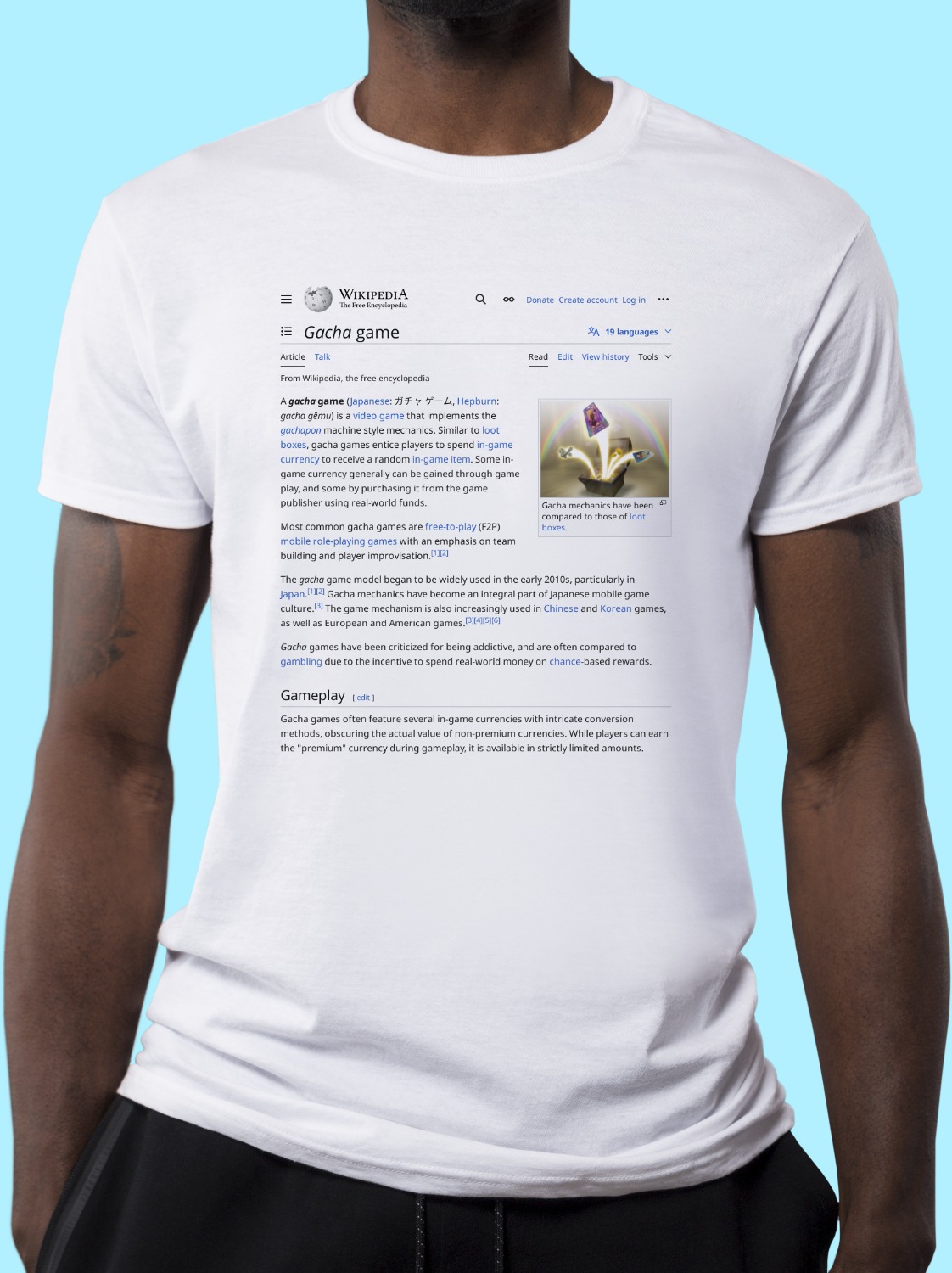
Gacha game Shirt
A classic cotton tee emblazoned with the Wikipedia article on Gacha game ↗.
cotton tee emblazoned with the Wikipedia article on Gacha game ↗.- Preshrunk jersey knit
- Seamless double-needle 2.2 cm collar
- Taped neck and shoulders
- Tear away label
- Double-needle sleeve and bottom hems
- Quarter-turned to eliminate centre crease
A gacha game (Japanese: ガチャ ゲーム, Hepburn: gacha gēmu) is a game, typically a video game, that implements the gachapon machine style mechanics. Similar to loot boxes, live service gacha games entice players to spend in-game currency to receive a random in-game item. Some in-game currency generally can be gained through game play and staying up-to-date, and some by purchasing it from the game publisher using real-world funds.
Most common gacha games are free-to-play (F2P) mobile role-playing video games with an emphasis on strategy, such as team building, synergizing and player improvisation.
The gacha game model has been around since the early 90s with strategy trading card games such as Magic: the Gathering, but began to be widely used in the early 2010s in mobile gaming by Japan. Gacha mechanics have become an integral part of Japanese mobile game culture as well as pop culture in general. The game mechanism is also increasingly used in Chinese and Korean games, as well as European and American games.
Digital gacha games have been criticized for being designed to be addictive in order to attract "whales" to spend money on microtransactions far beyond the usual price of a video game. The typical gacha game format that encourages spending real-world money on chance-based loot tables with in-game rewards of differing value instead of individual specific purchases has been compared to gambling.
About Wikishirt
Wikishirt is a retail experiment that lets you buy a shirt with any Wikipedia Article printed on it. There are over 5 million Wikipedia articles, so we have over 5 million shirts.Check out our homepage for random featured shirts and more!